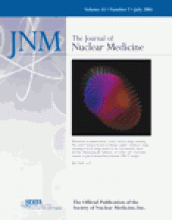Abstract
Neuroblastoma stands out among pediatric solid tumors because of its relative frequency, intriguing natural history, prognostic biologic features, and therapeutic challenges. It is the most common extracranial pediatric solid tumor and the most common neoplasm in infancy; >90% of the ∼600 cases diagnosed annually in the United States are in children ≤5 y old. Screening programs of infants show that many cases escape detection because of spontaneous regression or maturation into benign lesions. Origin from precursors of the sympathetic nervous system accounts for (a) primary sites in adrenal glands and in paraspinal locations from neck to pelvis and (b) high urinary levels of catecholamines in >90% of cases. This embryonal neoplasm often encases vascular structures and, unlike most solid cancers, usually presents with substantial metastatic disease (bone, bone marrow, lymph nodes, liver; spread to lung or brain is rare). Hence, defining disease status requires CT (or MRI), bone scan, metaiodobenzylguanidine (MIBG) scan, bone marrow tests, and urine catecholamine measurements. The natural history is strikingly variable but is largely predictable from clinical and biologic features. The latter are critical for distinguishing low-risk (90% survival) from high-risk (∼25%–30% survival) subsets, allowing identification of patients who, despite a favorable clinical profile (e.g., localized tumor), are likely to develop lethal metastatic disease, versus patients who have an ominous clinical profile (e.g., widespread disease) but are likely to survive, sometimes with little or no cytotoxic therapy.
Footnotes
Received Jan. 13, 2004; revision accepted Apr. 23, 2004.
For correspondence contact: Brian H. Kushner, MD, Department of Pediatrics, Memorial Sloan-Kettering Cancer Center, 1275 York Ave., New York, NY 10021.
Email: kushnerb{at}mskcc.org
*NOTE: FOR CE CREDIT, YOU CAN ACCESS THIS ACTIVITY THROUGH THE SNM WEB SITE (http://www.snm.org/ce_online) THROUGH JULY 2005.







